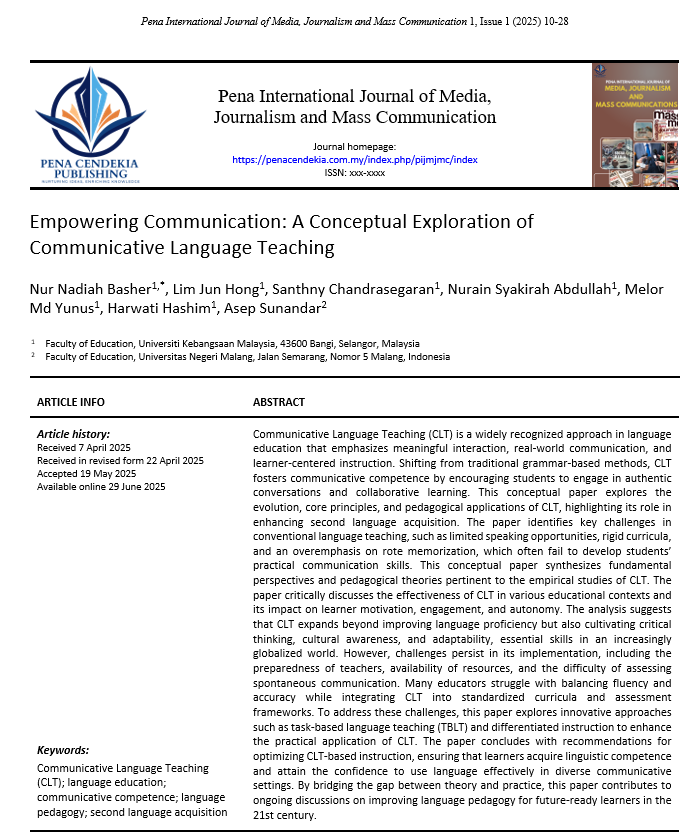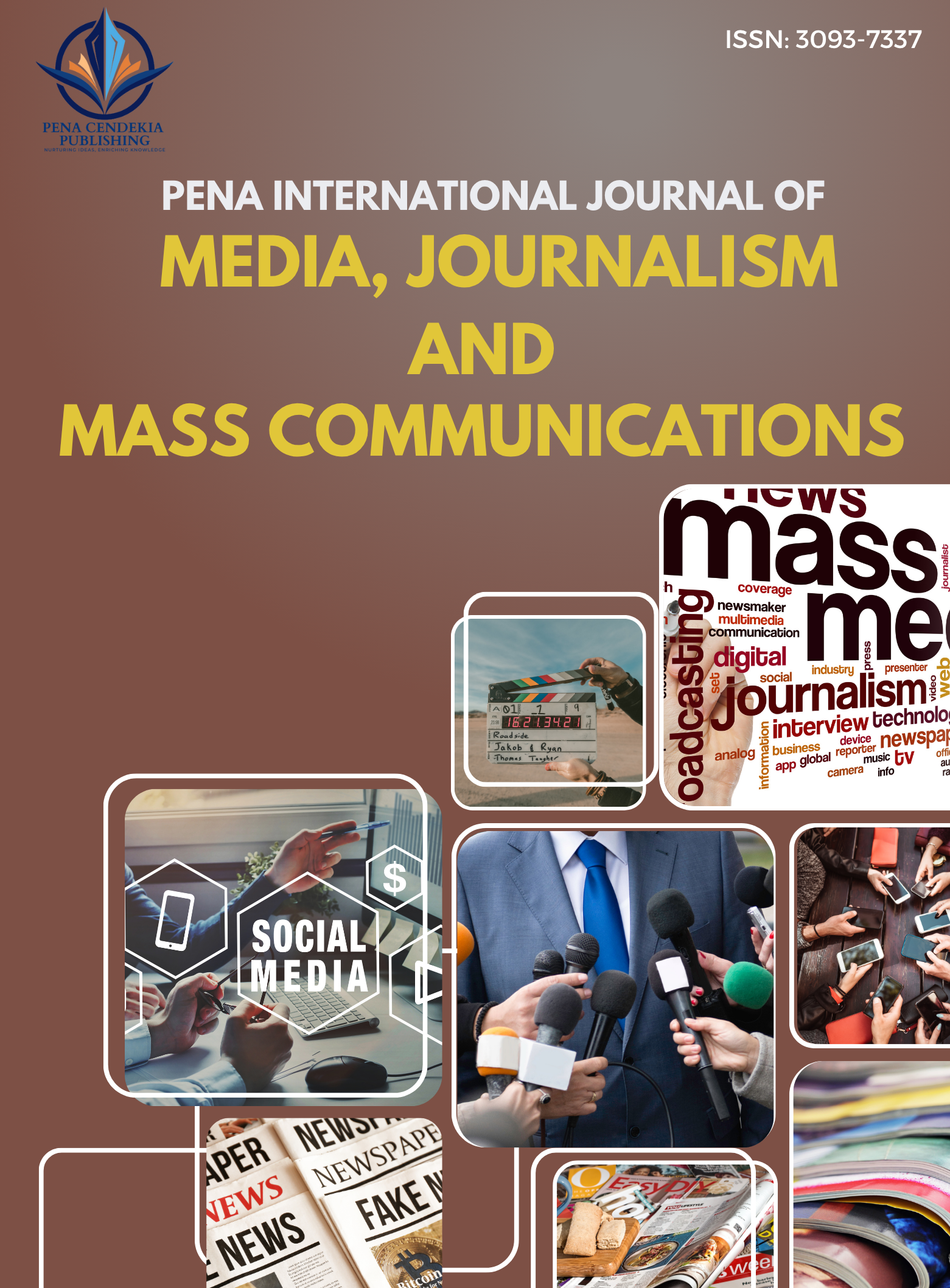Empowering Communication: A Conceptual Exploration of Communicative Language Teaching
Keywords:
language education, communicative competence, language pedagogy, second language acquisition , Communicative Language Teaching (CLT)Abstract
Communicative Language Teaching (CLT) is a widely recognized approach in language education that emphasizes meaningful interaction, real-world communication, and learner-centered instruction. Shifting from traditional grammar-based methods, CLT fosters communicative competence by encouraging students to engage in authentic conversations and collaborative learning. This conceptual paper explores the evolution, core principles, and pedagogical applications of CLT, highlighting its role in enhancing second language acquisition. The paper identifies key challenges in conventional language teaching, such as limited speaking opportunities, rigid curricula, and an overemphasis on rote memorization, which often fail to develop students’ practical communication skills. This conceptual paper synthesizes fundamental perspectives and pedagogical theories pertinent to the empirical studies of CLT. The paper critically discusses the effectiveness of CLT in various educational contexts and its impact on learner motivation, engagement, and autonomy. The analysis suggests that CLT expands beyond improving language proficiency but also cultivating critical thinking, cultural awareness, and adaptability—essential skills in an increasingly globalized world. However, challenges persist in its implementation, including the preparedness of teachers, availability of resources, and the difficulty of assessing spontaneous communication. Many educators struggle with balancing fluency and accuracy while integrating CLT into standardized curricula and assessment frameworks. To address these challenges, this paper explores innovative approaches such as task-based language teaching (TBLT) and differentiated instruction to enhance the practical application of CLT. The paper concludes with recommendations for optimizing CLT-based instruction, ensuring that learners acquire linguistic competence and attain the confidence to use language effectively in diverse communicative settings. By bridging the gap between theory and practice, this paper contributes to ongoing discussions on improving language pedagogy for future-ready learners in the 21st century.









